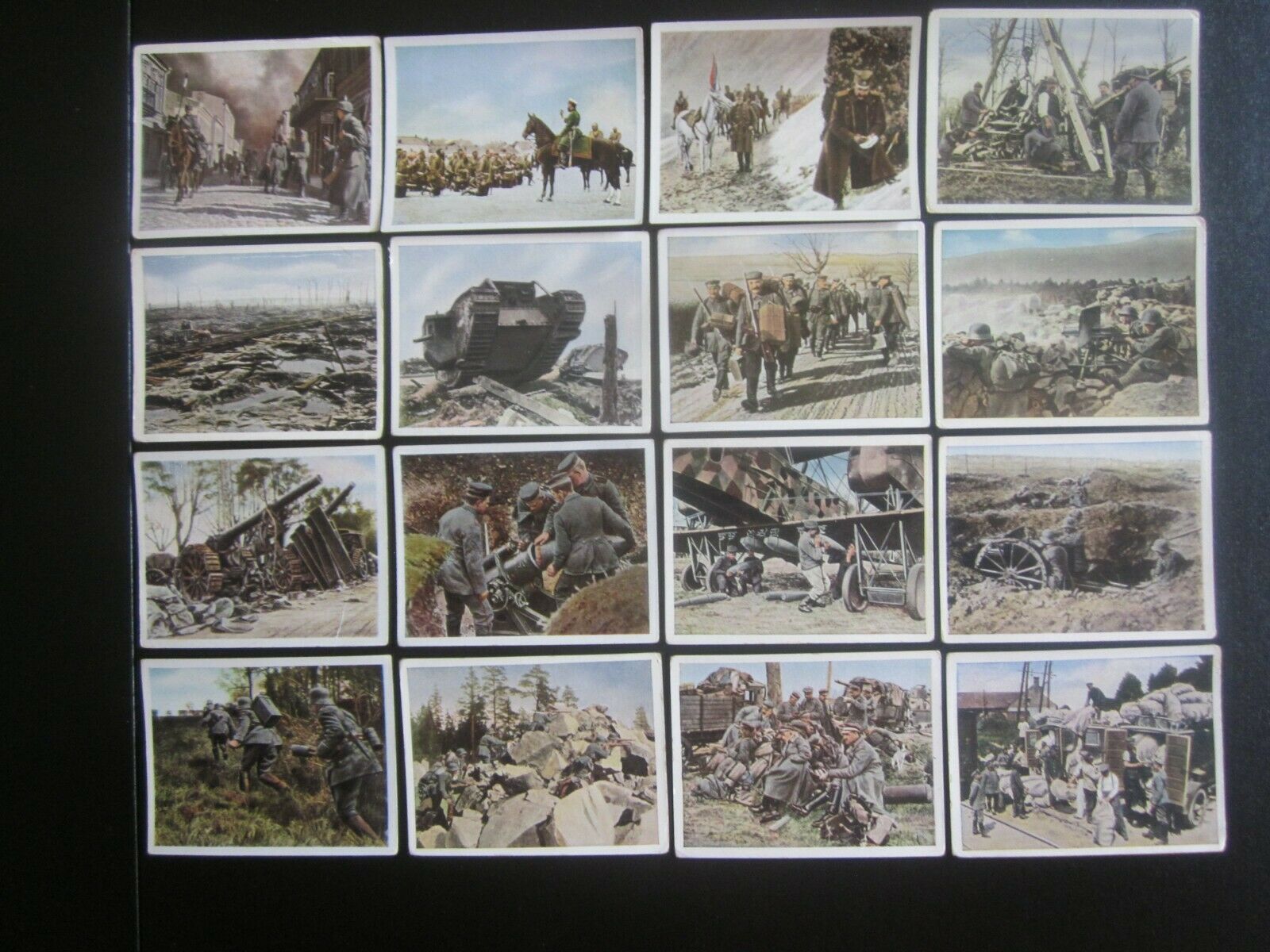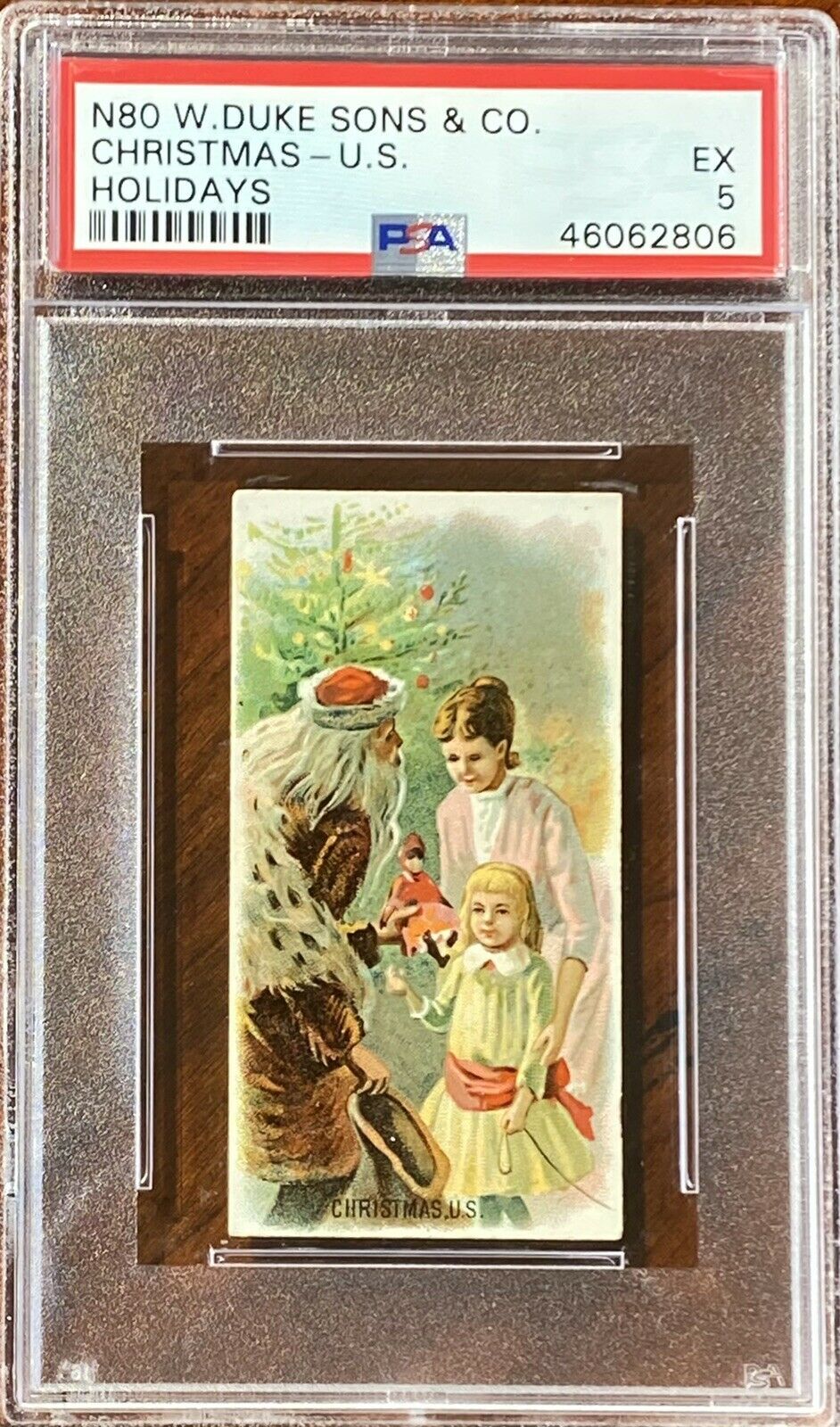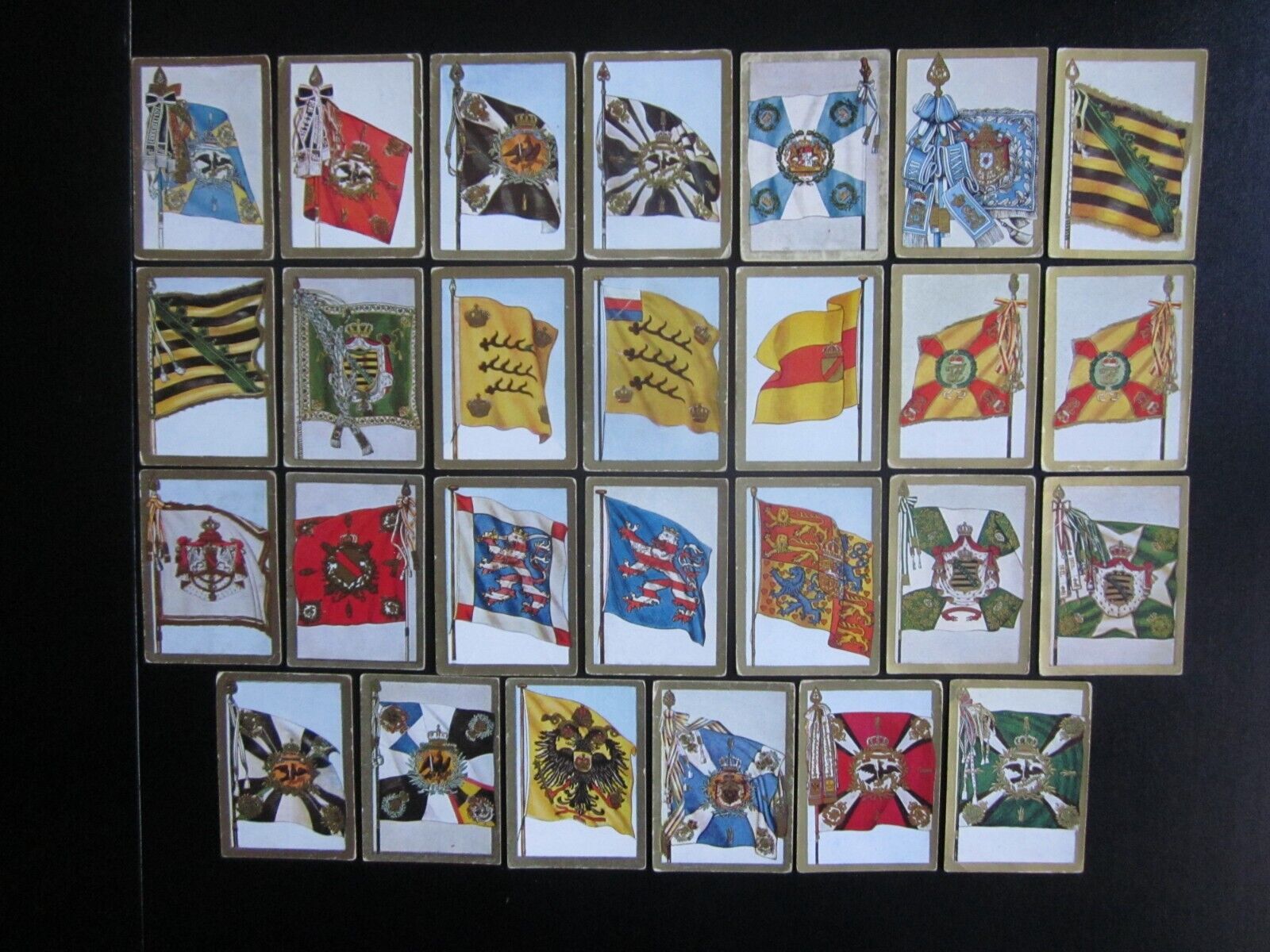-40%
16 color German cigarette cards of World War 1 action, issued in 1937, 2/3
$ 0.84
- Description
- Size Guide
Description
Offered here are 16 original German cigarette cards of World War I action, issued in 1937 by a number of German cigarette companies for the albumDer Weltkrieg
(The World War). Pictured here are:
No. 45:
In order to attract Russian troops away from out main goal around Gorlice and to divide their strength, a strong German corps moved into Lithuania. They were able to achieve their goal and pushed the Russians back to Dubissa and Windau.
No. 50:
Czar Nicholas Blesses Departing Russian Troops (1915). In July 1915 the Russian front in Poland became precarious. For the reinforcements going to aid those at the front, a blessing from the Czar was something special, for "Vater Czar" was not only the head of the country, but also of the Russian Orthodox Church.
No. 62:
A Serbian Officer Scouting a Road (1915). Despite bitter resistance the Serbs were eventually pushed back into the Balkan mountains. However, their army was not totally destroyed because the bad weather, difficult terrain and the winter in the mountains made it difficult to supply our troops there.
No. 86:
The French Setting Up a Heavy Gun at Verdun (1916). French General Herr wanted to withdraw from the Eastern banks of the Maas River. However, the new commander at Verdun, General Petain, forbade his troops from leaving that position. With the help of reinforcements and heavy guns, such as the one pictured here, he was able to save the fortress of Verdun for the French.
No. 134:
Cratered Field in Flanders (1917). The heavy rains and high ground-water table often made the fields of Flanders into a swamp and filled up the artillery shell craters to the rim. It was impossible to dig in and the constant wetness was unpleasant and unhealthy for the soldiers. One advantage of the mud, however, was that it prevented many artillery shells from exploding on contact with the ground.
No. 135:
Captured Tank at Cambrai (1917). After their failed offensives at Arras and Flanders the British attempted on November 20, 1917 a surprise attack at Cambrai with over 400 tanks. The enemy broke through the Siegfried Line at first, but by November 30th we won back almost all of the lost ground.
No. 143:
Those on Leave Return to the Front (1917). Starting in 1916 all troops were entitled to an R & R break from the fighting at home in Germany. Transporting large numbers of troops on break created logistical problems, and so special vacation trains were set up for the task. On the way back home, the troops were also provided with food and other things
.
No. 157:
Defending against an attack at Isonzo (Italy). For two years Italian troops tried to break through the Austrian front lines at Isonzo and began to show success in August 1917, pushing the Austrians back. However, when German troops arrived to support the Austrians, they won back all the territory that was previously lost.
No. 158:
Captured Materiel From Our Italian Offensive (1917). After breaking through the Isonzo Front at Flitsch and Tolmein on October 24, 1917 the Italians fled over the Piave River. They would have been destroyed had not the English and French come to their aid and prevented our pursuit.
No. 175:
Loading a Mortar. On March 21, 1918 at 4:40 am the "St. Michael Offensive" began between Arras and La Fere with over 6,000 German artillery pieces and many hundreds of mortars pouring gas and explosive fire on the enemy. This artillery barrage would be followed by an infantry attack
. No. 177:
A Bomber. Our great offensive of March 1918 was supported by large numbers of airplanes, among them many bombers that attacked behind enemy lines. They could carry up to 10,000 lbs of bombs and could fly at a height of 5,000 meters (c. 16,000 feet) at a speed of 130-140 kilometers per hour.
No. 185:
An Infantry Gun at Armentieres (1918). At the Battle of Armentieres much of our artillery was stuck in the swampy ground of the Lys Valley, which proved to be a decisive shortcoming. The only guns that could support the attacking infantry were light infantry guns and mountain guns.
No. 190:
Battery Troops Advancing. The German 7th Army reached Chateau-Thierry on May 30, 1918. However, both wings did not move forward as quickly as the center, which prompted the enemy to attack the 7th Army's flanks at Villiers-Cotterets on July 18th.
No. 194:
German Troops in Finland (1918). With great difficulty the Finnish militias attempted to stop the invasion of the Russian Bolshevics. The "White" government in Finland put out a call for help and we responded by sending troops that landed on April 3, 1918 at Hangoe. It was the Baltic Division under Count von der Goltz that quickly pushed back the Reds. Some of the Finnish troops had been trained in Germany.
No. 209:
Rear Guard Action (1918, the last fighting). With great determination our tired and battered troops made an orderly retreat to our positions along the Maas River and Antwerp where they intended to stop the enemy offensive. This position could have been held, thus giving us a better bargaining position for peace negotiations. But this was frustrated by the revolutionary unrest that was beginning in Germany.
No. 221:
Mail Delivery (1914-18). At the beginning of the war 141 postal stations for the military with 2,627 employees were established. Soon thereafter, it was over 700 stations with over 13,000 employees. They certainly had their work cut out for them, for over 11.7 million letters were sent from the front to Germany and over 17 million went from Germany to the front.
The card measures 2 and 3/8 inches by 1 and 7/8 inches.
With multiple purchases, please wait for the invoice for reduced shipping.










